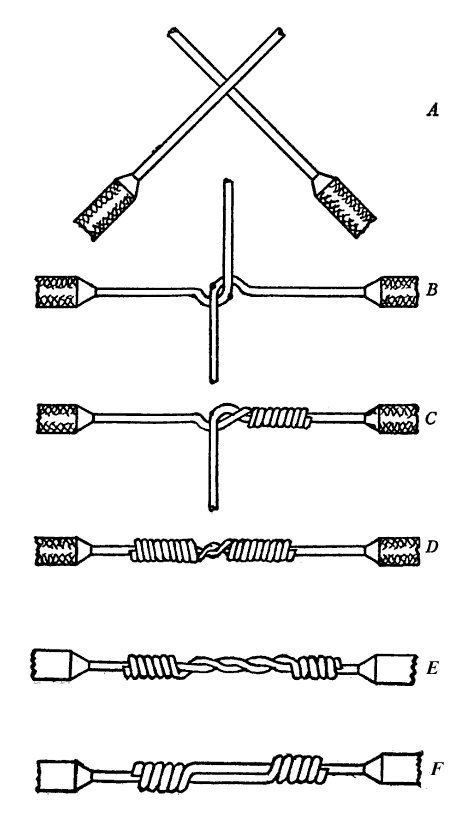 | ||
The Western Union or Lineman splice was developed during the introduction of the telegraph to mechanically and electrically connect wires that were subject to loading stress. The wrapping pattern is designed to cause the termination to tighten as the conductors pull against each other. This type of splice is more suited to solid, rather than stranded conductors, and is fairly difficult to complete.
The Western Union Splice is made by twisting two ends of a wire together counterclockwise 3/4 of a turn each, finger tight. Then, using needle-nose pliers, the ends are twisted at least five more turns, tightly. The cut off ends are pushed close to the center wire.
"Short tie" and "long tie" variations exist, mainly for purposes of coating the connection with solder. The longer version may aid in solder flow.
NASA tests on 22 and 16 AWG wire showed that the Western Union Splice is very strong and is stronger than the wire alone if done properly.
